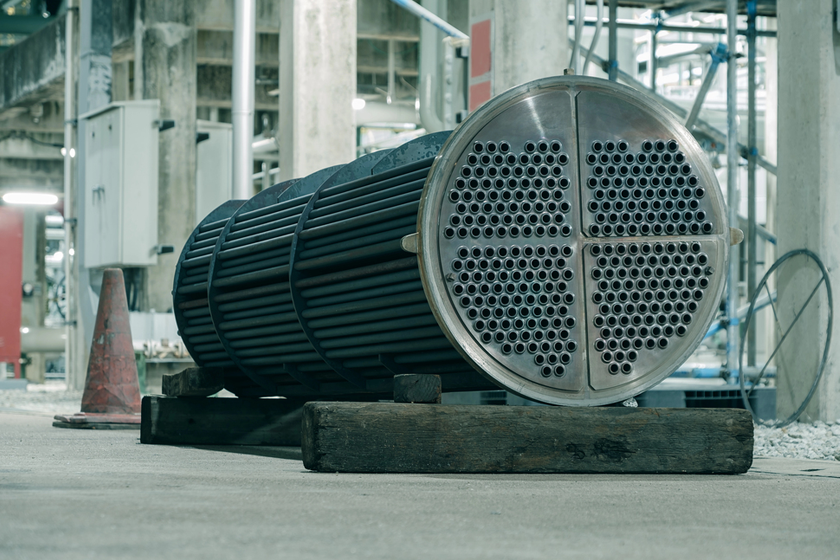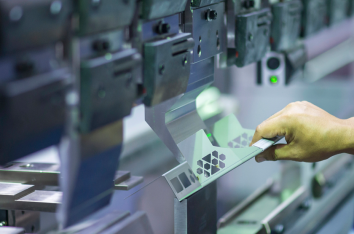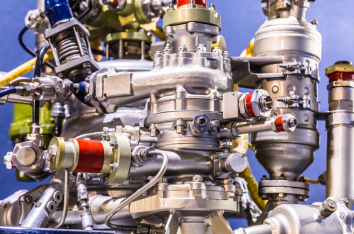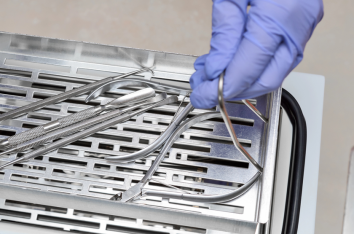To maintain the efficiency of industrial and commercial heat exchangers, proper inspection is key. Knowing how to test heat exchanger tubes can help you prevent costly downtime, reduce maintenance issues, and keep processes running at optimal performance. Generally, advanced tools and knowledge are used to evaluate tube integrity, identify early-stage damage, and extend the operational life of your heat exchangers. Modern technologies, combined with traditional inspection methods, create a comprehensive approach to monitoring tube performance.
Visual Inspection for Surface Defects
The first step in tube inspection often involves a detailed visual examination. Technicians should look for signs of corrosion, pitting, or erosion on accessible tube surfaces. This method is simple and effective for detecting obvious damage. In many industrial applications, visual inspection is conducted during scheduled maintenance when the system is offline. Using bright lighting, magnification, and camera systems, it is possible to identify areas that require further investigation. This method acts as the foundation for more advanced testing and helps determine the urgency of repairs.
Hydrostatic Testing
Hydrostatic testing is a standard method to verify the structural integrity of heat exchanger tubes. The process involves filling the tube with water or another incompressible fluid and pressurizing it to a level above normal operating conditions. Any leaks or weaknesses in the tube walls become evident under pressure. Controlled hydrostatic testing is used to ensure that every tube can withstand operational pressures. This method is especially useful for new installations and after major cleaning or refurbishment of heat exchangers.
Eddy Current Testing
Eddy current testing has become a widely accepted non-destructive approach for evaluating heat exchanger tubes. The method uses electromagnetic induction to detect cracks, wall thinning, and corrosion in conductive materials. Eddy current probes generate currents in the tube walls, and changes in these currents indicate flaws. This technique is fast and precise, allowing inspectors to test multiple tubes in sequence. Modern heat exchanger testers often integrate eddy current technology with automated scanning systems, reducing inspection time while increasing accuracy.
Ultrasonic Testing
Ultrasonic testing involves sending high-frequency sound waves through tubes to measure wall thickness and detect internal flaws. Reflections from imperfections help identify defects that are not visible on the surface. This method works well for tubes that are difficult to access visually. Ultrasonic testing techniques may be used for both small-diameter and large-diameter heat exchanger tubes. By mapping the thickness along the tube length, erosion patterns can be determined to predict areas prone to failure. Ultrasonic testing complements other methods to create a complete assessment.
Infrared and Thermal Imaging
Thermal imaging provides a non-contact method to detect blockages, leaks, and uneven flow in heat exchanger tubes. Infrared cameras capture temperature variations along the tube surface. Areas that are cooler or hotter than expected can indicate restricted flow, corrosion buildup, or leaks. Thermal imaging is used to quickly identify sections that need further testing. This method is especially effective for operational systems, allowing inspections without shutting down the equipment, which reduces downtime and minimizes disruptions.
Leak Detection Using Gas Tracers
In addition to liquid-based testing, gas tracer methods can identify leaks in heat exchanger tubes. Small amounts of tracer gas are introduced, and sensors detect escaping gas along the tube walls. This method is particularly useful for systems handling hazardous or pressurized fluids. Leak detection is often paired with other heat exchanger testing methods to confirm results. The technician performing the inspection should select the appropriate tracer gas and monitor the system carefully to maintain safety while achieving precise detection.
Integration of Automated Inspection Systems
Advancements in automation have transformed how heat exchanger tubes are tested. Automated inspection systems can simultaneously scan multiple tubes using arrays of sensors. Software analyzes the data in real time and generates reports that highlight potential issues. This approach increases throughput and consistency compared to manual testing. Automated systems are especially valuable in large industrial plants with hundreds or thousands of tubes. We integrate these technologies with traditional testing to create a reliable, repeatable inspection routine.
Choosing the Right Heat Exchanger Tester
Selecting the correct heat exchanger tester depends on the type of tubes, operating conditions, and inspection goals. For stainless steel and compact modular designs like Spirec heat exchangers, testers that combine eddy current and ultrasonic capabilities often yield the best results. The technician should evaluate each application individually to select the most effective inspection tools. By matching the testing method to the tube material and operating environment, hidden defects may be detected early, reducing operational risk and maintenance costs.
Benefits of Regular Tube Inspection
Regular inspection of heat exchanger tubes helps maintain thermal efficiency, prevents unexpected shutdowns, and extends equipment life. By combining multiple testing methods, technicians can identify a wide range of defects, from surface corrosion to internal cracking. In high-value applications such as electronics cooling, lasers, or industrial washers, maintaining clean and intact tubes directly impacts performance. Regular inspections help clients maintain consistent heat transfer, minimize fluid contamination, and avoid costly replacements.
Application in Modern Systems
Heat exchanger tube testing is essential across a broad range of applications. Commercial and industrial washers, water heaters, solar systems, and process systems all rely on tubes to transfer heat efficiently. Systems that handle corrosive fluids, such as chemical process units, benefit from stainless-steel designs like Spirec, which are compatible with advanced inspection methods. The combination of reliable tube construction and modern testing ensures both safety and performance in demanding conditions.
Case Study: Spirec Heat Exchangers
Spirec all stainless-steel heat exchangers feature welded construction, single-pass designs, and no gaskets, making them highly compatible with inspection techniques. Low internal volume, enhanced turbulence, and freeze tolerance allow the units to perform reliably even under challenging conditions. Our team uses eddy current, ultrasonic, and thermal imaging methods on these units to detect anomalies early. Compact modular designs and low-pressure drop characteristics make Spirec heat exchangers ideal for applications requiring precise monitoring and minimal maintenance intervention.
Developing a Testing Schedule
A systematic inspection schedule improves reliability and reduces long-term maintenance costs. By aligning heat exchanger testing methods with operating cycles, technicians can anticipate tube wear and plan maintenance activities efficiently. For example, high-temperature or corrosive applications may require more frequent inspections using eddy current and ultrasonic techniques, while less demanding systems might be monitored using visual and hydrostatic tests.
Recording and Analyzing Data
Documentation is key for effective tube monitoring. Each inspection generates data on wall thickness, temperature anomalies, and potential leak points. Upon comparing current measurements with historical records, trends can be identified, allowing predictive maintenance planning. Automated inspection systems further simplify data collection, reducing human error and providing digital records for regulatory compliance.
Summary of Inspection Methods
Successful monitoring of heat exchanger tubes combines multiple approaches. Visual inspections identify surface-level damage. Hydrostatic testing confirms pressure tolerance. Eddy current and ultrasonic methods detect internal defects. Thermal imaging and gas tracer techniques reveal operational inefficiencies and leaks. Automated inspection systems provide speed, consistency, and detailed reporting. Selecting the right heat exchanger tester and combining techniques ensures that tubes operate safely, efficiently, and reliably over the long term.




